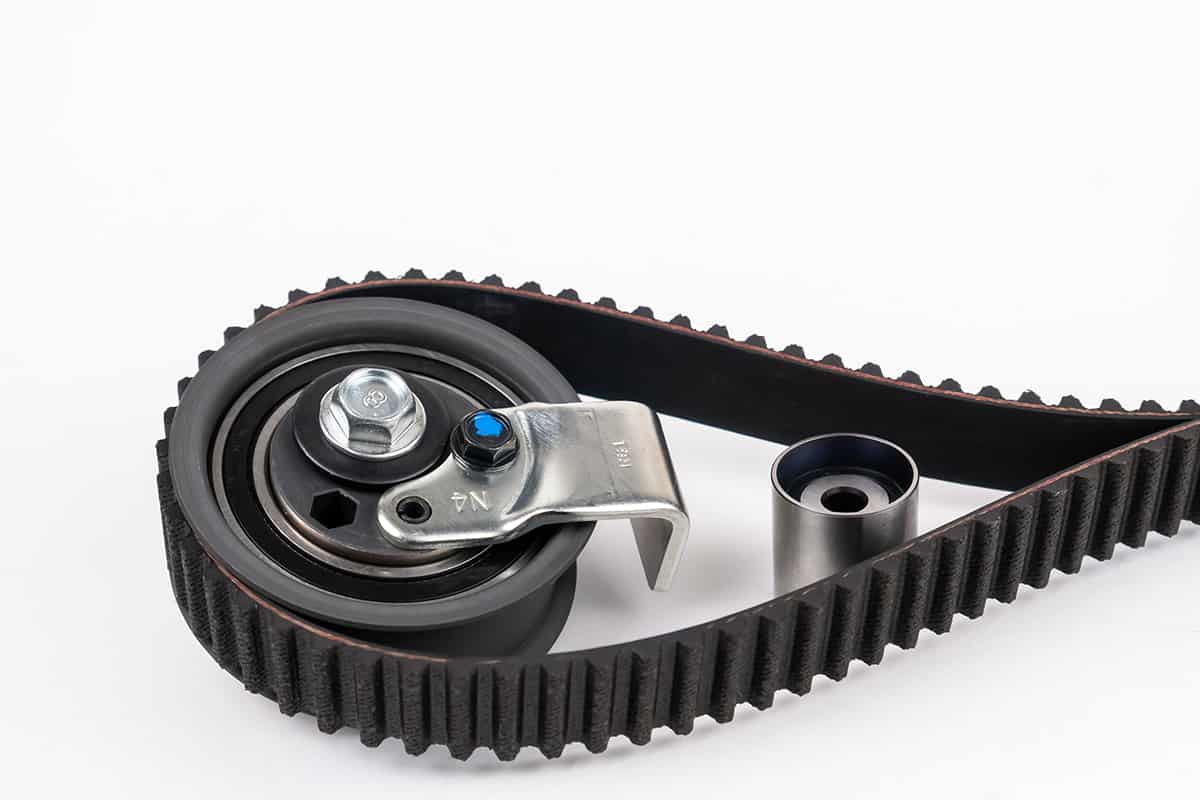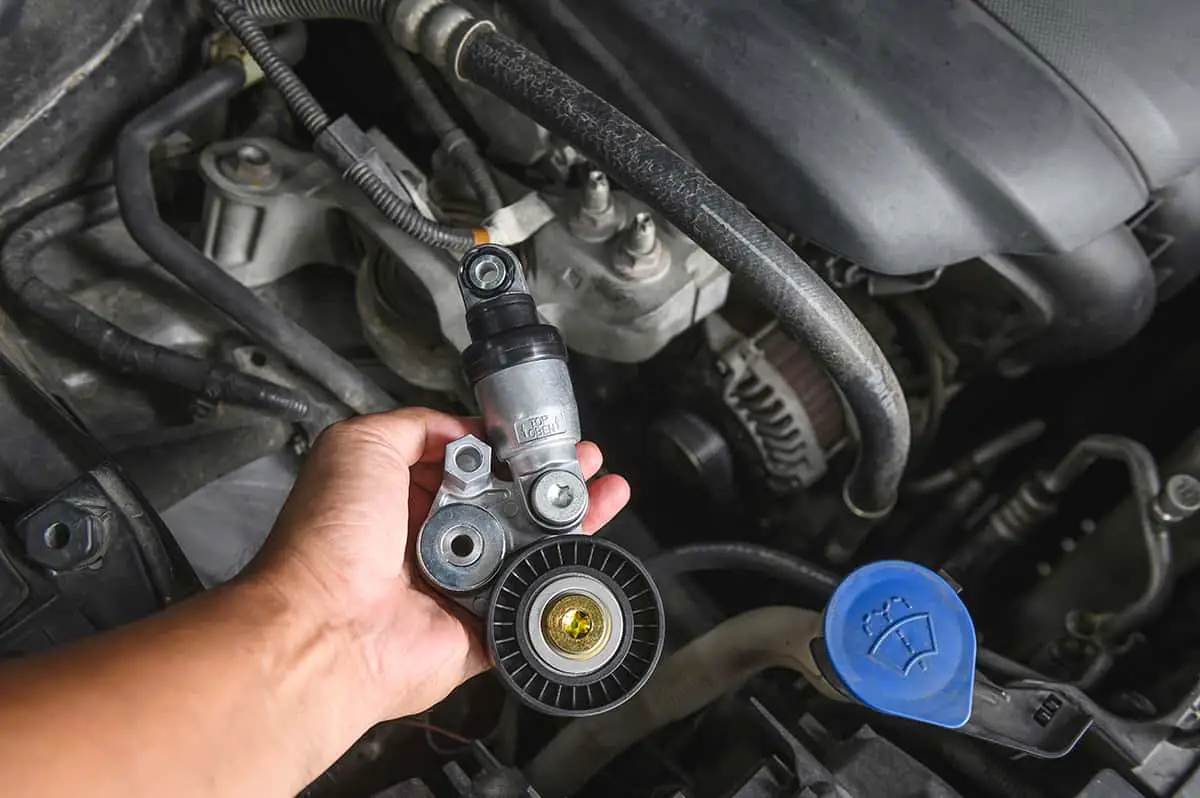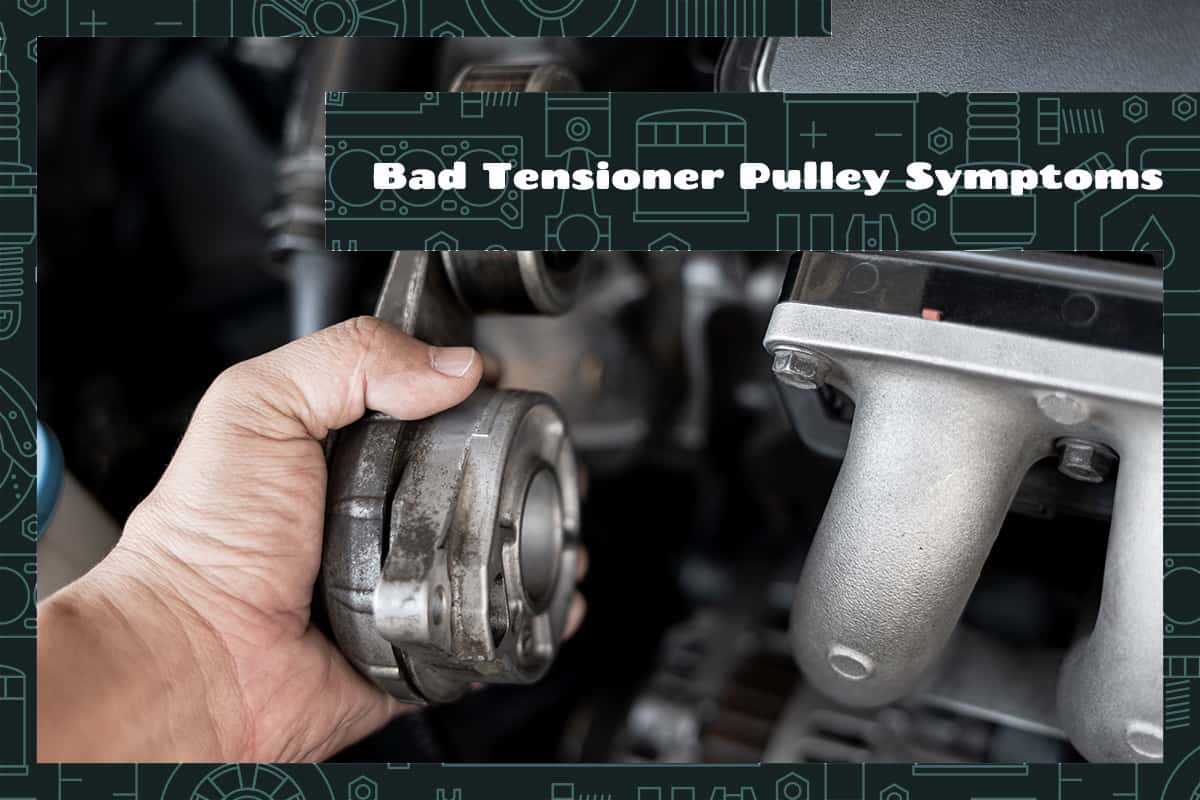A tensioner pulley ensures that the serpentine belt maintains ideal tension, powering various accessories such as the alternator, power steering, and air conditioning. When it malfunctions, the consequences can range from minor inconveniences to serious engine damage.
The tell-tale signs of a bad tensioner pulley include unusual noises from the engine, issues with power steering and air conditioning, frequent battery failures, engine overheating, and unexpected wear and tear of the belt.
This article provides a guide on the symptoms of a bad tensioner pulley, as well as explores the consequences and responses to this issue.
Role of a Tensioner Pulley in Cars

A tensioner pulley is a wheel on an adjustable pivot, designed to keep tension on the engine’s serpentine belt. This belt is a long, winding band that powers various car systems, including the alternator, power steering pump, water pump, air conditioning compressor, and sometimes even the radiator fan.
The primary role of a tensioner pulley is to maintain the correct tension on the serpentine belt, preventing it from slipping off or becoming too tight. When the engine is running, the serpentine belt travels at high speed, creating vibrations and temperature changes. The tensioner pulley counters these forces, ensuring the belt remains at an optimal tension, hence preventing any compromise on the power transferred to the car’s vital systems.
The tensioner pulley is typically located on the front side of the engine, attached to the engine block. It’s easy to locate if you follow the serpentine belt’s path, as it’s one of the wheels the belt wraps around.
The importance of a well-functioning tensioner pulley cannot be overstated. It keeps the serpentine belt—the lifeline of your car’s accessory systems—functioning properly. If the tensioner pulley fails, the serpentine belt can lose tension or even slip off, leading to failure of the systems it powers.
Identifying Symptoms of a Bad Tensioner Pulley
A tensioner pulley can also experience wear and tear, and eventually fail. Early identification of the symptoms of a bad tensioner pulley can prevent further damage to the car’s engine. Here’s what to look out for:
1. Unusual Noises from Your Engine
If the pulley is failing, you may hear a squealing, squeaking, or grinding noise, especially during ignition or while accelerating. These sounds are often a result of the serpentine belt slipping on the pulley or the pulley bearing starting to fail.
2. Power Steering and Air Conditioning Issues
As the tensioner pulley helps maintain the serpentine belt’s tension, a failing pulley can affect the systems powered by this belt. You might experience difficulty in steering, as the power steering pump might not receive sufficient power. Similarly, if your car’s air conditioning starts malfunctioning or performing inconsistently, a bad tensioner pulley could be the culprit.
3. Frequent Battery Failure
The alternator, responsible for keeping the battery charged, is driven by the serpentine belt. A malfunctioning tensioner pulley might lead to the alternator not getting enough power, resulting in a quickly draining battery. If you find your car’s battery frequently running out of power or needing to be jump-started, consider checking the tensioner pulley.
4. Engine Overheating
A tensioner pulley in bad condition can lead to the serpentine belt losing tension and slipping. This might hinder the effective operation of the water pump, causing poor circulation of the coolant and eventually leading to engine overheating.
5. Car Vibrations and Rough Idling
A failing tensioner pulley might lead to the serpentine belt not maintaining optimal tension, resulting in vibrations or shuddering in the car, especially during idling. If your car is shaking more than usual or if it idles roughly, it’s time to take a look at your tensioner pulley.
6. Unexpected Belt Wear and Tear
A worn-out or damaged tensioner pulley can cause the serpentine belt to wear unevenly, fray, or even crack. If upon visual inspection, you find the belt is showing signs of damage or wear faster than expected, the tensioner pulley might need a replacement.
Responding to a Bad Tensioner Pulley

Once you’ve identified the symptoms of a bad tensioner pulley, the next step is to respond effectively. Ignoring these signs can lead to extensive engine damage, affecting the longevity and performance of your car. Here’s what you should do:
Tensioner Pulley Replacement
If your tensioner pulley is indeed faulty, a mechanic will suggest a replacement. The process involves removing the serpentine belt, replacing the old tensioner pulley with a new one, and then refitting the serpentine belt. If the serpentine belt has been subject to wear or damage due to the faulty pulley, it may need replacement as well.
Price of a Tensioner Pulley Replacement
The cost of a tensioner pulley replacement can vary widely, depending on the make and model of your car and the labor costs in your area. On average, you can expect the total cost, including parts and labor, to range anywhere from $150 to $400. However, considering the vital role a tensioner pulley plays in your car’s functionality, the investment is well worth it.
Consequences of Ignoring a Bad Tensioner Pulley
Ignoring the symptoms of a bad tensioner pulley is a gamble that can lead to extensive engine damage and costly repairs. Here’s what can happen if the issue is not addressed promptly:
Engine Damage
A failing tensioner pulley can lead to the serpentine belt losing its tension and slipping. This can potentially result in significant engine damage, affecting components like the alternator, water pump, power steering pump, and air conditioner compressor.
Power Steering and AC Failure
This can make the steering wheel harder to turn, reducing the overall drivability of the car. The air conditioning system can also suffer, leading to a less comfortable driving experience, especially in extreme weather conditions.
Frequent Battery Drain
A failing tensioner pulley might lead to the alternator not getting enough power, which in turn can lead to the battery draining frequently. This means you might find yourself stranded with a dead battery more often than you’d like.
Increased Repair Costs
While the cost of replacing a tensioner pulley might seem significant, the expense can pale in comparison to the cost of repairing the damage caused by ignoring this issue.
Replacing or repairing major engine components can run into thousands of dollars, not to mention the inconvenience of having your car off the road for an extended period.
FAQs
1. How often should a tensioner pulley be replaced?
The lifespan of a tensioner pulley can vary depending on the make and model of the car, the quality of the part, and driving conditions. However, as a general guideline, a tensioner pulley should be inspected whenever the serpentine belt is replaced, typically between 60,000 and 100,000 miles. If there are signs of wear, looseness, or abnormal noise, the tensioner pulley should be replaced.
2. Can I replace a tensioner pulley myself?
Replacing a tensioner pulley can be a complex task. While it is technically possible for a car owner with the right tools and know-how to replace a tensioner pulley, it’s recommended to have this kind of work done by a professional mechanic. This is particularly true if the tensioner pulley is hard to reach or if the serpentine belt routing is complex.
3. Can a car run with a bad tensioner pulley?
While a car might still run with a bad tensioner pulley, it’s not recommended to do so. A malfunctioning tensioner pulley can lead to the serpentine belt slipping off or breaking, which can result in the failure of critical engine components, such as the alternator, water pump, and power steering pump. Driving with a bad tensioner pulley can lead to reduced vehicle performance, potential engine damage, and in extreme cases, a complete breakdown.






